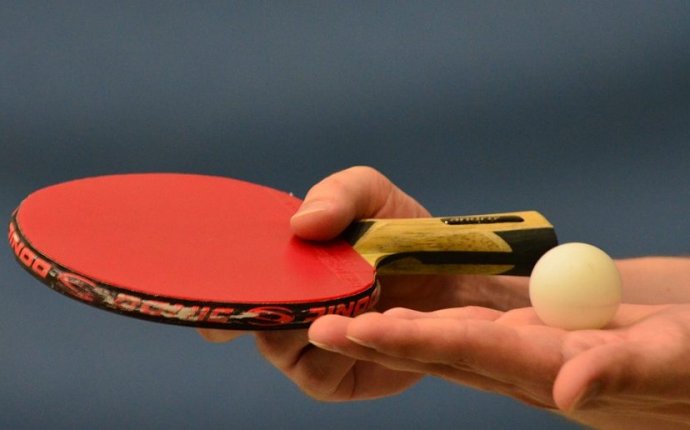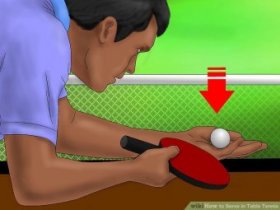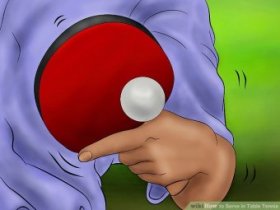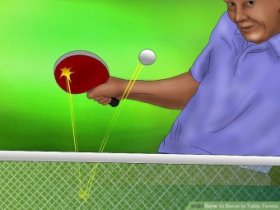
Official table tennis serving rules
 Hold the ball flat in the palm of your hand. To start a legal serve, keep your hand completely open and flat after you pick up the ball. Let the ball sit there for a second or two, as your hand needs to be stationary, or still, before you throw it up into the air.
Hold the ball flat in the palm of your hand. To start a legal serve, keep your hand completely open and flat after you pick up the ball. Let the ball sit there for a second or two, as your hand needs to be stationary, or still, before you throw it up into the air.
- Any illegal serve can result in the official calling it “incorrect.” While you may be warned one time during a match or if the official is unsure if the serve is legal, any clearly incorrect serves will lead your opponent to get your points!
- Keep the ball above the table and behind your serve line. The hand holding the ball (which will become your “free hand”) has to be above the table as you get ready to serve. The ball itself should remain behind the end of the table (your serve line).
- Your thumb can cross the serve line as long as the ball itself doesn’t.
- Keep your racket hand below the table to hide it. Unlike the ball, your racket can be hidden under the table. Doing this may help you hide the kind of serve you’re going to make. You’ll need to quickly bring your racket up once you throw the ball into the air to get ready to serve.
- Until you’ve practiced serving, leave your racket hand above the table. This tricky technique is legal, but it’s best reserved for more advanced players.
- Throw the ball at least 6.3 inches (16 cm) up in the air.
 This is the minimum height required by the officials. Any lower and it won’t be counted as a legal serve. The ball needs to be thrown up vertically rather than sideways or diagonally.
This is the minimum height required by the officials. Any lower and it won’t be counted as a legal serve. The ball needs to be thrown up vertically rather than sideways or diagonally.
- Make sure that your throw makes the ball go almost straight up into the air. You can’t, for example, just drop the ball from a height of 6.3 inches (16 cm). This won’t be considered a vertical toss.
 Wait until it’s coming back down toward the table to avoid getting called out by the official. Bounce the ball on your side before it goes over the net. Hit the ball so that it lands on your side first. If it just sails over the net without bouncing, it’s an illegal serve.
Wait until it’s coming back down toward the table to avoid getting called out by the official. Bounce the ball on your side before it goes over the net. Hit the ball so that it lands on your side first. If it just sails over the net without bouncing, it’s an illegal serve.
- Practice until you get the proper amount of force needed to follow this rule. You want a serve that’s fast enough to trick your opponent, but not so strong that it misses your side of the table.
- The ball can also go around the net so long as you can curve it enough to get it back onto your opponent’s side of the table. This is a pretty difficult skill, so aim straight over the net until you’re sure you can make a curving serve.
- Hit anywhere on the table if you’re playing singles. Your opponent’s whole side is fair game if it’s just the two of you. This lets you really use the table. You can do short and long serves to make the match more difficult for your opponent.
- Hit the opposite diagonal if you’re playing doubles. You’re restricted to the square that’s diagonal from you if you’re playing with partners. Anything that hits outside this square is illegal.
- Move your free arm away from the ball once you’ve served. It’s illegal to “hide” the the ball from the official or your opponent with your hand once you’ve served. Pull your free hand all the way back so you don’t get accused of doing this.
Source: www.wikihow.com









